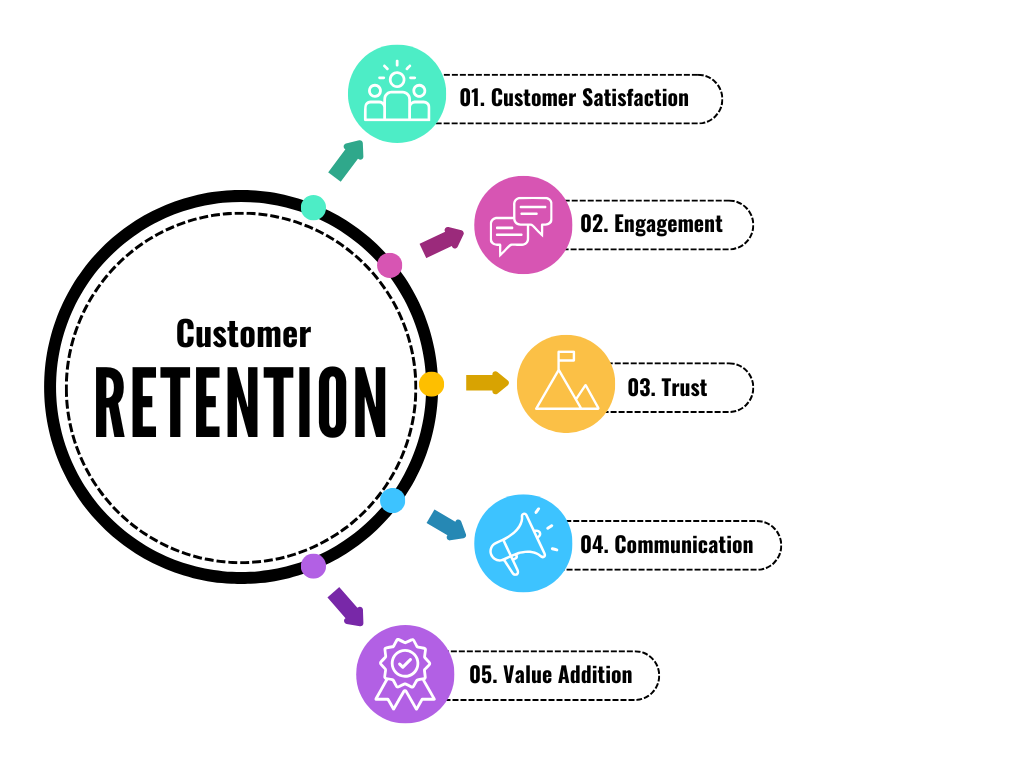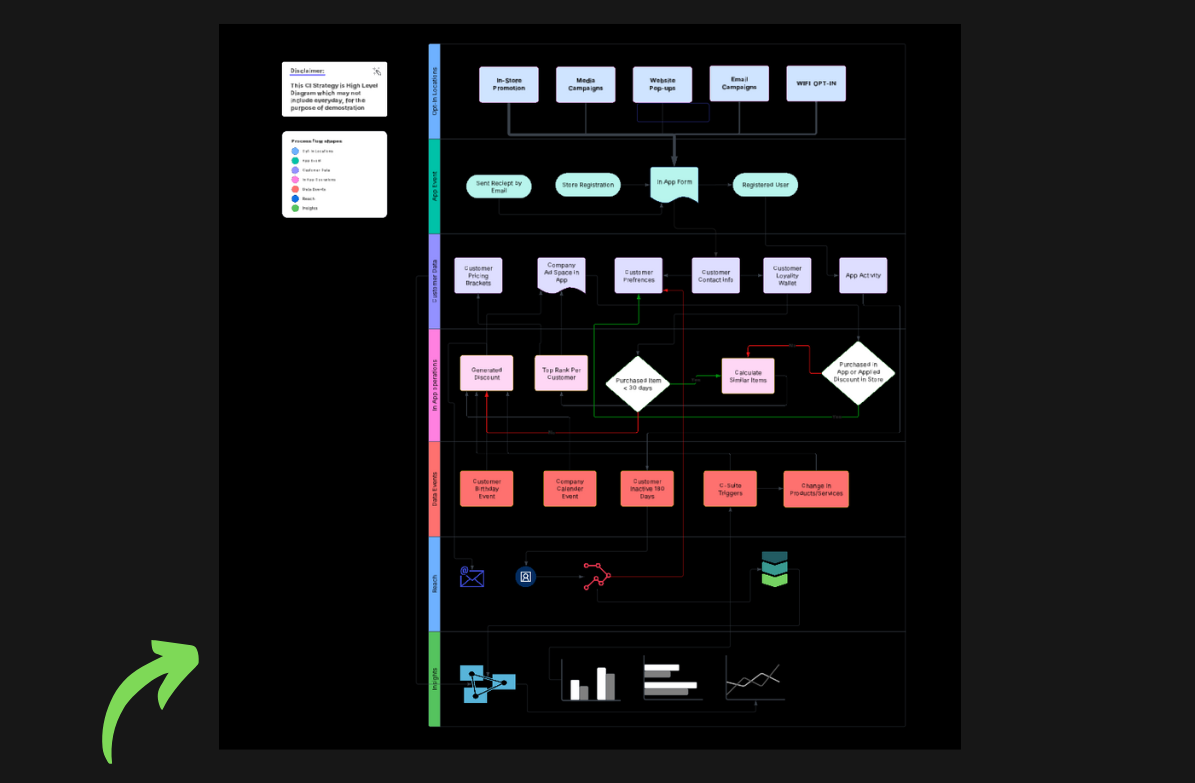Key Takeaways:
- Customer retention is crucial for sustainable business growth.
- Focus on five key factors: Customer Satisfaction, Engagement, Trust, Consistent Communication, and Value Addition.
- Implement tailored strategies, including Loyalty Programs, Personalized Marketing, and Community Building to enhance customer retention.
- Understand the four levels of retention strategies to streamline processes effectively.
- Leverage customer feedback to improve experiences and foster satisfaction.
In today’s competitive business landscape, maintaining customer loyalty is more vital than ever. Customer retention doesn’t just keep revenue flowing; it fosters advocacy, promotes brand esteem, and lowers acquisition costs. This article will explore five strategies for enhancing customer retention based on fundamental principles, tailored strategies, and effective communication.
What are the five key factors of customer retention?
1. Customer Satisfaction
Customer satisfaction stands as the foundation of retention. Companies must ensure that products and services align with customer expectations. Surveys and feedback can help gauge satisfaction levels and highlight areas for improvement.
2. Engagement
Active and meaningful engagement with customers keeps them involved with the brand. Greater involvement can lead to increased loyalty, as customers feel more connected and valued.
3. Trust
Building trust necessitates transparency and ethical practices. When customers believe that a business prioritizes their well-being, they’re more likely to return and recommend the brand to others.
4. Consistent Communication
Regular updates through newsletters, social media, and direct communication help maintain a relationship with customers. Timely and relevant messaging nourishes customer loyalty by keeping them informed and valued.
5. Value Addition
Continuously providing value through quality service, new offerings, or educational content reinforces customer loyalty. Always look for ways to add value beyond the initial purchase.
What are some customer retention strategies?
1. Loyalty Programs
Establish loyalty programs that reward repeat customers with discounts, exclusive access, or freebies, encouraging them to return after their initial purchase.
2. Personalized Marketing
Utilize data to target customers with personalized marketing communications fostering a more emotional connection.
3. Customer Service Excellence
Exceptional customer service enhances retention as customers are more likely to stay when they feel heard and respected.
4. Regular Feedback Collection
Encourage feedback through surveys, comment cards, or online reviews. This not only showcases that you value customer opinions but also helps identify areas of improvement.
5. Community Building
Create a sense of belonging through social media groups or forums where customers can engage with the brand and each other, fostering loyalty through community interaction.
What are the 4 levels of retention strategies?
1. Attracting New Customers
Starting your retention efforts begins with effective acquisition strategies that bring in the right customers who will thrive with your brand.
2. Customer Onboarding
Smooth onboarding experiences ensure that customers understand how to use products/services effectively, leading to higher satisfaction and lower churn.
3. Relationship Management
Nurturing customer relationships through regular check-ins and value communication strengthens loyalty.
4. Customer Win-Back
Implement re-engagement strategies for lapsed customers, tailoring campaigns that offer reasons for them to return.
What are the 3 R’s of customer retention?
1. Retain
Focus on keeping current customers engaged and satisfied to minimize churn.
2. Re-engage
Identify lapsed customers and strategize on how to re-engage them through targeted communications or value offers.
3. Reactivate
Once customers have lapsed, reactivate them with win-back campaigns that highlight new offerings or solutions to their previous concerns.
What role does customer feedback play in retention strategies?
1. Understanding Customer Needs
Feedback provides insights into what customers value and expect, which can be helpful for creating tailored strategies.
2. Identifying Areas for Improvement
Analyzing feedback helps identify problems promptly and adjust strategies accordingly.
3. Enhancing Customer Experience
Utilizing feedback for enhancements contributes to a better overall customer experience, promoting satisfaction.
4. Building a Feedback Loop
Creating a loop of continuous feedback collection and implementation fosters customer involvement and advocacy.
How can personalized experiences enhance customer retention?
1. Tailored Recommendations
Using customer data to recommend products/services increases checkout rates and fosters loyalty.
2. Targeted Promotions
Craft personalized promotions that resonate with individual customer interests, encouraging repeat purchases.
3. Customized Communication
Personalized communication, from greetings to tailored content, builds stronger emotional bonds.
4. Building Emotional Connections
By addressing individual needs and preferences, businesses can create a loyal customer base that feels uniquely valued.
What metrics are most effective in measuring customer retention success?
1. Customer Retention Rate
This metric indicates the percentage of customers a business retains over a specific period and is crucial in assessing overall retention success.
2. Churn Rate
Churn rate measures the rate at which customers cease doing business with a company, providing insights into areas needing improvement.
3. Net Promoter Score (NPS)
NPS gauges customer loyalty through their likelihood to recommend the brand, offering valuable feedback on satisfaction.
4. Customer Lifetime Value (CLV)
CLV assesses the total revenue a business generates from a customer throughout their entire relationship, helping to establish the importance of retaining customers.
What are the common challenges businesses face in implementing retention strategies?
1. Lack of Resources
Restricted budgets or manpower can limit a business’s ability to implement robust retention initiatives.
2. Inefficient Data Collection
Suboptimal data collection processes may hinder your understanding of customer preferences and satisfaction levels.
3. Communication Gaps
Misalignment in communication approaches can lead to ineffective messaging and customer dissatisfaction.
4. Resistance to Change
Organizations may struggle to adapt to new retention strategies, especially if there is a lack of buy-in from the team.
How does effective communication influence customer loyalty and retention?
1. Fostering Trust
Open and clear communication establishes a rapport with customers, fostering a sense of trust.
2. Proactive Issue Resolution
When issues arise, effective communication can facilitate prompt resolutions, enhancing customer loyalty.
3. Building Relationships
Engaging customers with personalized communication builds strong relationships, encouraging loyalty.
4. Ensuring Transparency
Honesty and clarity in all communications ensure customers feel secure and valued, cultivating trust and loyalty.
In conclusion, focusing on four critical factors—customer satisfaction, engagement, trust, and value addition—coupled with effective retention strategies, provides pathways to higher customer loyalty. Recognizing that challenges exist will allow businesses to navigate potential pitfalls and develop a robust strategy for customer retention. By implementing these practices thoughtfully, organizations can foster an environment of loyalty, engagement, and growth.
For more insights into maintaining customer loyalty and effective retention strategies, check out our article on how to increase customer retention.



